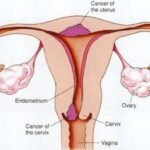Besides the pain of the procedure and the loss of a functional organ, there are many downsides to circumcising. The healing process is long and leaves the child in discomfort for the duration of the recovery. More importantly, more severe complications can occur, and circumcision can cause more problems than it is rumored to solve. Not only can it interfere with breastfeeding, there can be physical side effects for the infant. In some hospitals, rate of complication can be as high as 20%; the actual rate varies from hospital to hospital.
According to the AAP, two studies have suggested that the complication rate is between 0.2 and 0.6%, with most complications being minor. The AAP, however, acknowledges that the data is inconclusive. It is unknown exactly how common complications are or how frequently they occur. Other sources cite the complication rate as ranging from a full 1-10%, which only covers a short time span after hospital discharge and only includes those side effects that require treatment. Many complications go unreported, as they do not become noticeable until years after the operation. Many adult men are ignorant that they are experiencing anything unusual, much less a complication of circumcision.
The most likely complication is bleeding, which occurs 0.1% of the time at the least. That number is from the AAP. Other sources say that hemorrhage occurs a full 1% of the time. Need for blood transfusion is rare, but children have died before from complications–making hemorrhage the most devastating one. Newborns that have undiagnosed conditions related to blood clotting, such as hemophilia or anemia, are especially at risk. It is believed that death from circumcision is under-reported and often attributed to something else. These small percentages add up to millions of hemorrhage cases since circumcision became routine.
There have been reports of circumcision causing scalded skin syndrome, necrotizing fasciitis, sepsis, and meningitis. These are rare but serious ailments. Sepsis may occur as much as 0.5% of the time. Surgical problems can occur, too, including urethral fistula and penile necrosis. There can also be unwanted cosmetic results, such as uneven cuts, unsightly skin tags, or scarring. Skin bridges can be created, which can cause pain during erection. Men have lost the entire heads of their penises from this procedure. Some are plagued with tight, painful erections because of it.
There was an incident where a child’s penis was cut completely off during circumcision. He was raised as a girl, but deep inside, he knew he was a boy. He was plagued with depression throughout his life. When he was finally told the sad truth of his past, he changed his name and began to live life as a man. Unfortunately, he ended up committing suicide by shooting himself in the head in a field. His name was David Reimer, and his story is very well-known. His death is very rarely blamed on circumcision, the procedure that began his problems.
Studies have found that circumcised boys have more penile problems in their first year of life. The number of penile problems of circumcised boys is far more than the average number of penile problems of intact boys in the long run. An intact boy may have a problem every few years throughout his life, while a circumcised infant often has a penile problem every few months for that first year. These penile problems are very painful for the child. This proves that circumcising a child as an infant is not ideal. Waiting until a child is potty trained is better, but not by much.
The reason for this is obvious. Infants wear diapers, where urine and feces collect. The wound of circumcision is left to heal in an unsanitary environment. The foreskin is designed to close around the glans for the first few years of life, shielding it from dirt and other foreign bodies. Urine & feces can get into the circumcision scar area, causing irritation. If the scar area is not kept very clean, penile adhesion can occur, which can cause a painful infection. It can only be treated by forcefully retracting what is left of the foreskin, causing pain and bleeding.
More than 71% of circumcised infants develop adhesions, and one third of those cases are severe. About one third of boys ages 1-5 have adhesions. The numbers decrease after that point, with some older circumcised boys still having penile adhesions in their teen years. This can cause skin bridges, which are unsightly. A penile adhesion in the teen years could cause pain during erection, when the small amount of foreskin is pulled away from the glans. Masturbation would also be quite painful.
Ammonia from urine can cause an ulcer to developed at the opening of the urethra. This blocks the path of urine, so that the bladder cannot be emptied. Surgery may be necessary to correct this problem. If untreated, the urinary retention can lead to kidney failure. In one small study, the incidence of meatal ulcer was 31%. Eight percent developed the more severe condition associated with this problem. Another study, according to the AAP, showed that meatitis and meatal stenosis can occur in 8-21% of circumcised infants.
Phimosis can occur in circumcised boys. One study found the condition it 2.9% of cut boys, most of whom had buried penises. Buried penis is just one of many complications of circumcision, which obviously can cause phimosis–something with circumcision is intended to prevent! It is a condition in which the penile shaft is beneath the pubic skin, when dense tissue pulls it inward. The glans is covered, which makes it seem as though the boy actually has a very long foreskin. This happens when too much shaft skin is removed. It can result in ridicule and/or the child having to sit to pee. Surgical repair is required.
Incidence of infection is higher in circumcised newborns than intact ones. This could be caused by more “hands-on” contact. A circumcised newborn penis requires more care than an intact one, inviting more chances for germs to be introduced to the diaper area. It only makes sense than adding a raw wound to the genitals would give bacteria yet another chance to enter the bloodstream, causing infection. Constant exposure to feces and urine only adds concern. Unwanted cosmetic results, such as skin bridges, can impede hygiene, which also increase the risk of infection. Infection is the second most common complication.
This information is disputed by some circumcision advocates solely on their disapproval of some distributors of it. That this information can be found on anti-circumcision web pages does not mean that it is not factual. Many anti-circumcision sites contain statistics from studies done by unbiased groups and actual newspaper clippings about very real, factual events where complications occurred from circumcisions. Photographs of such complications can be found on these websites, proving that they are not fabrications. Young men who have been the victims of botched circumcisions have sent in their stories, and that a site has an anti-circumcision agenda does not make the stories or the pain of these men any less real.
While very few men die of the infections that are supposedly prevented by circumcision, newborns can and do die during and after circumcision. I would be willing to venture that more infants’ lives are lost to circumcision than are saved by it, as circumcising is hardly a life-saving procedure. Not all of these complications are fatal, but they certainly are more serious and painful than UTI. The incidence of complication from circumcision is higher than the rate by which UTI incidence is decreased. Circumcision is an unnecessary risk to take.
The sources for this article include one anti-circumcision web page, with the rest of the information taken from AAP publications. The one web page with an anti-circumcision agenda lists the sources of every claim and contains photographs as well as newspaper clippings to support claims. The AAP is widely recognized as an unbiased organization, and they recognize that rate of occurrence varies and is not well-documented. Overall, this makes the safety of circumcision quite questionable.





